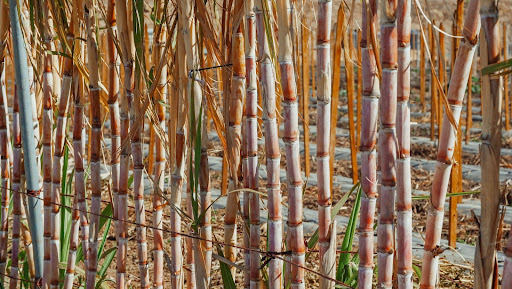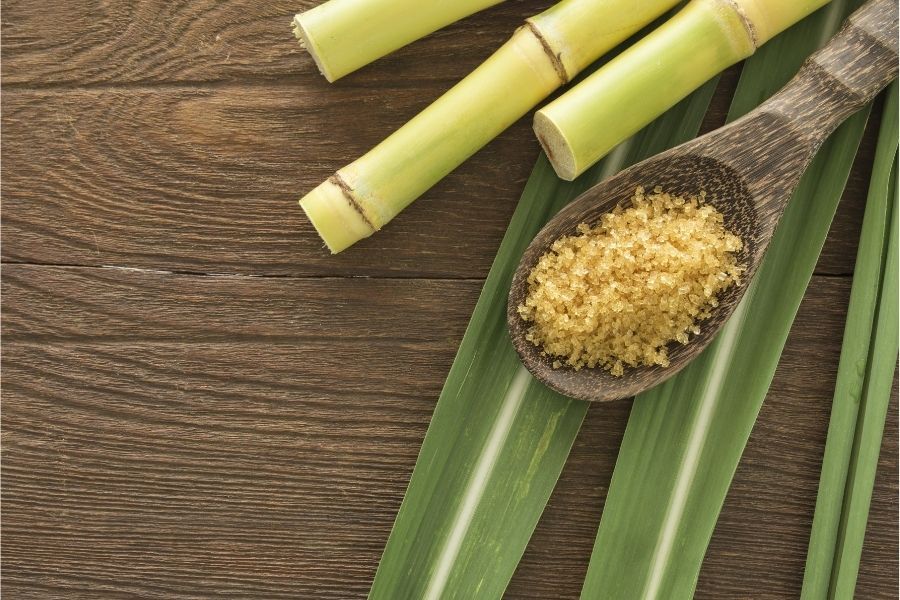The Trip of Cane Sugar Processing: From Harvest to Crystals
A Comprehensive Guide to the Ecological Effect and Sustainability Practices in Walking Cane Sugar Processing
The environmental influence of cane sugar handling provides an intricate variety of challenges that warrant mindful exam. From soil deterioration and too much water usage to the carbon footprint connected with cultivation and production, the effects of conventional techniques are far-reaching. In contrast, the fostering of cutting-edge sustainability measures provides a path towards much more accountable manufacturing approaches. Understanding the interplay between these problems is important for stakeholders in the sector. What specific methods can be applied to strike an equilibrium in between productivity and environmental stewardship? The answers depend on a closer look at both the obstacles and possible options.
Review of Walking Cane Sugar Handling
Walking cane sugar processing involves a collection of organized actions that transform sugarcane into polished sugar. Originally, gathered sugarcane is transferred to refining facilities, where it undertakes cleansing to remove dirt and particles. Following this, the walking cane is squashed to draw out juice, which is after that cleared up by eliminating pollutants through heating and the enhancement of lime.
The clarified juice goes through evaporation, where water is gotten rid of to concentrate the sugar material. These crystals are divided from the remaining syrup utilizing centrifugation, resulting in raw sugar.
The end product is then dried and packaged for circulation. Throughout this whole process, preserving effectiveness and quality assurance is vital to make sure the sugar meets industry requirements. Each action in walking cane sugar processing not only contributes to the end product however additionally has effects for resource use and waste generation, setting the stage for conversations on sustainability and ecological impacts connected with sugar manufacturing.
Ecological Challenges of Production
The production of walking stick sugar provides numerous significant environmental difficulties that warrant interest. One main problem is the comprehensive usage of agrochemicals, consisting of pesticides and fertilizers, which can result in soil destruction, biodiversity loss, and contamination of neighborhood water resources. The overflow from sugarcane areas usually carries these chemicals into nearby environments, interfering with marine life and influencing the wellness of areas reliant on these water bodies.
An additional obstacle is the high power intake related to sugarcane handling. The boiling and refining phases need considerable warm, mainly generated by shedding fossil fuels, contributing to greenhouse gas emissions. In addition, the large acreage needed for sugarcane cultivation can result in deforestation and habitat damage, further aggravating climate adjustment and harmful wild animals.
Moreover, the labor practices in some areas elevate honest issues, as employees may face inadequate working problems and inadequate earnings. This circumstance frequently perpetuates a cycle of destitution in local areas. Cane Sugar Processing. Attending to these environmental difficulties is essential for creating much more sustainable practices in cane sugar manufacturing, ultimately benefiting both the atmosphere and the neighborhoods associated with this sector
Water and Land Usage Effect
Water sources and land usage are critical elements in the walking cane sugar sector that considerably influence the environment. The growing of sugarcane calls for substantial water input, with quotes recommending that it can eat as much as 2,000 litres of water per kilogram of sugar created. This extensive usage of water typically brings about depletion of regional water sources, influencing not only the sugarcane ranches however additionally bordering communities and areas that rely upon the same water sources for farming and domestic use.

Moreover, land usage for sugarcane farming can lead to deforestation and the conversion of natural habitats into monoculture ranches. This method reduces biodiversity, interferes with neighborhood ecosystems, and adds to dirt destruction. The development of sugarcane areas usually elbows in on beneficial farming land, developing competitors for resources between food and biofuel production.
Sustainable techniques, such as maximizing watering methods and executing crop turning, are crucial to minimize these influences. By taking on a lot more efficient water use and land monitoring methods, the walking stick sugar industry can reduce its eco-friendly footprint, making sure an equilibrium between farming efficiency and environmental conservation.
Greenhouse Gas Emissions
Greenhouse gas discharges represent a substantial ecological problem within the walking cane sugar processing sector, especially as agricultural methods broaden to fulfill global need. The growing of sugarcane, a plant that grows in tropical climates, counts heavily on artificial about his fertilizers and chemicals, which add to laughing gas emissions. In addition, land-use changes, consisting of deforestation for new sugarcane plantations, release co2 stored in plants and soil.
Throughout handling, power consumption is another major source of greenhouse gas emissions - Cane Sugar Processing. Numerous sugar mills use fossil fuels to power equipment and create warmth, causing substantial carbon impacts. In addition, the transport of raw sugarcane and ended up items includes layers of discharges with gas combustion in cars
The advancing impact of these emissions exacerbates climate adjustment, posing threats not just to the atmosphere however likewise to the long-term viability of the industry. Stakeholders must identify the immediate requirement for extensive techniques that deal with these emissions. This involves assessing current farming methods, processing approaches, and transport systems to determine areas for renovation and reduction. Dealing with greenhouse gas emissions is important for cultivating an extra sustainable cane sugar market in an altering climate.

Sustainable Practices and Innovations
Lasting practices and developments are increasingly crucial in the walking cane sugar processing market as stakeholders seek to decrease ecological impacts while preserving performance. One significant improvement is the implementation of incorporated plant management, which enhances source usage by combining soil administration, parasite control, and plant rotation techniques. This technique boosts yield while decreasing chemical inputs and preserving soil health and wellness.
Additionally, the adoption of renewable energy resources, such as biomass from sugarcane deposits, has actually obtained traction - Cane Sugar Processing. By transforming waste products right into power, refining facilities can decrease their reliance on fossil gas, therefore lowering greenhouse gas exhausts
Water monitoring techniques have actually additionally seen improvements through the recycling and reusing of water in handling plants, dramatically minimizing freshwater intake. Developments in technology, such as precision agriculture, enable farmers to keep track of crop health and resource usage better, ensuring lasting growing methods.
Moreover, accreditation programs like Fair Trade and Rainforest Partnership motivate ecologically responsible farming techniques and advertise social these details equity within the supply chain. By accepting these sustainable techniques and technologies, the walking cane sugar processing industry can boost its strength and contribute favorably to ecological stewardship.
Conclusion
The ecological effect of cane sugar handling provides significant obstacles, consisting of soil degradation, high water consumption, and greenhouse gas discharges, together with honest issues related to labor methods. Dealing with these concerns with lasting practices, such as integrated plant monitoring, sustainable power adoption, and water recycling, is essential. By promoting ecologically liable and socially equitable techniques in sugar manufacturing, the sector can minimize its damaging impacts, guaranteeing a much more lasting future for both neighborhoods and communities associated with this market.
Walking stick sugar handling includes a series of organized actions that change sugarcane about his right into refined sugar. Each step in walking stick sugar handling not just contributes to the final product however additionally has implications for resource usage and waste generation, establishing the stage for discussions on sustainability and environmental effects connected with sugar manufacturing.
Greenhouse gas exhausts represent a considerable environmental issue within the walking stick sugar handling market, specifically as farming techniques increase to fulfill international need.Lasting techniques and innovations are progressively crucial in the walking cane sugar handling sector as stakeholders look for to lower ecological influences while preserving efficiency.The environmental impact of cane sugar processing offers substantial obstacles, consisting of soil degradation, high water consumption, and greenhouse gas emissions, along with moral worries associated to labor practices.